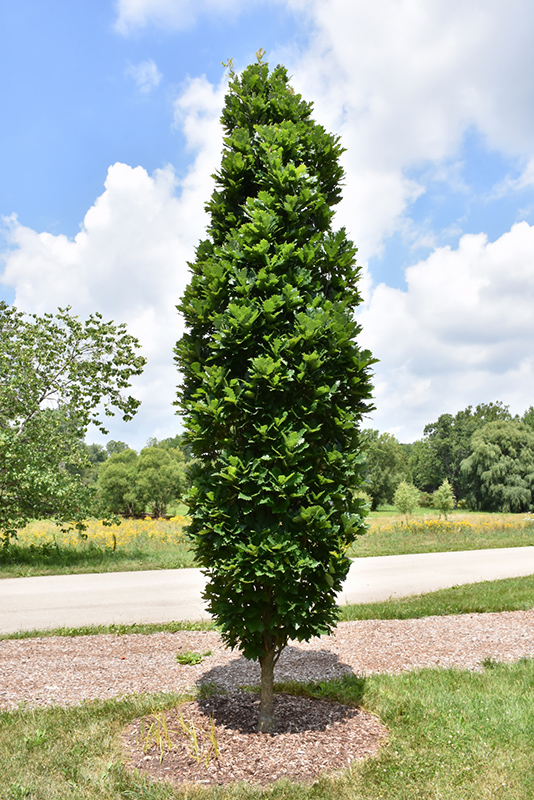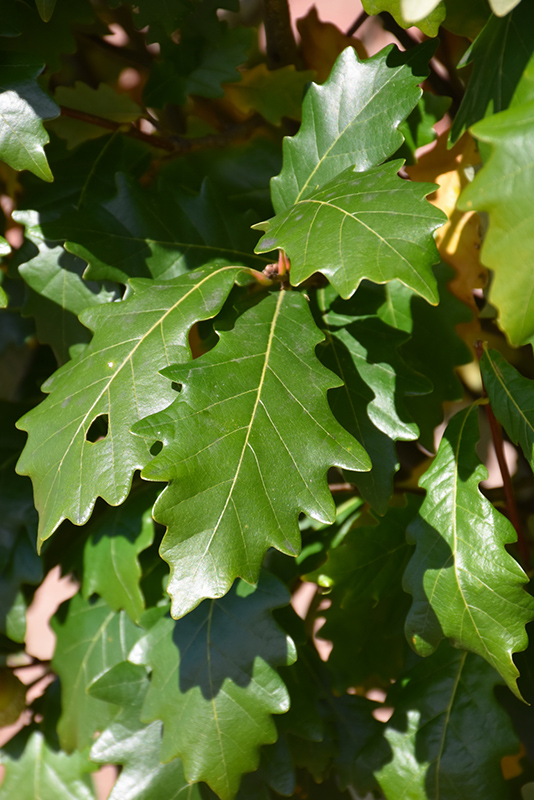Kindred Spirit Oak
Quercus x warei 'Nadler'
Height: 40 feet
Spread: 7 feet
Sunlight:
![]()
Hardiness Zone: 4a
Other Names: Ware's Oak, Hybrid Oak
Description:
This fast growing variety has a very narrow, columnar habit; glossy, dark green foliage turns bright red-orange in fall; strong branching and a high resistance to mildew and drought make this a great selection as a landscape accent
Ornamental Features
Kindred Spirit Oak is primarily valued in the landscape for its rigidly columnar form. It has attractive dark green foliage with silver undersides. The large lobed leaves are highly ornamental and turn an outstanding red in the fall. However, the fruit can be messy in the landscape and may require occasional clean-up.
Landscape Attributes
Kindred Spirit Oak is a dense deciduous tree with a strong central leader and a narrowly upright and columnar growth habit. Its average texture blends into the landscape, but can be balanced by one or two finer or coarser trees or shrubs for an effective composition.
This tree will require occasional maintenance and upkeep, and usually looks its best without pruning, although it will tolerate pruning. It is a good choice for attracting squirrels to your yard. Gardeners should be aware of the following characteristic(s) that may warrant special consideration;
- Messy
Kindred Spirit Oak is recommended for the following landscape applications;
- Vertical Accent
- Hedges/Screening
Planting & Growing
Kindred Spirit Oak will grow to be about 40 feet tall at maturity, with a spread of 7 feet. It has a low canopy with a typical clearance of 2 feet from the ground, and should not be planted underneath power lines. It grows at a fast rate, and under ideal conditions can be expected to live to a ripe old age of 150 years or more; think of this as a heritage tree for future generations!
This tree should only be grown in full sunlight. It is very adaptable to both dry and moist locations, and should do just fine under average home landscape conditions. It is not particular as to soil type or pH. It is highly tolerant of urban pollution and will even thrive in inner city environments. This particular variety is an interspecific hybrid.



